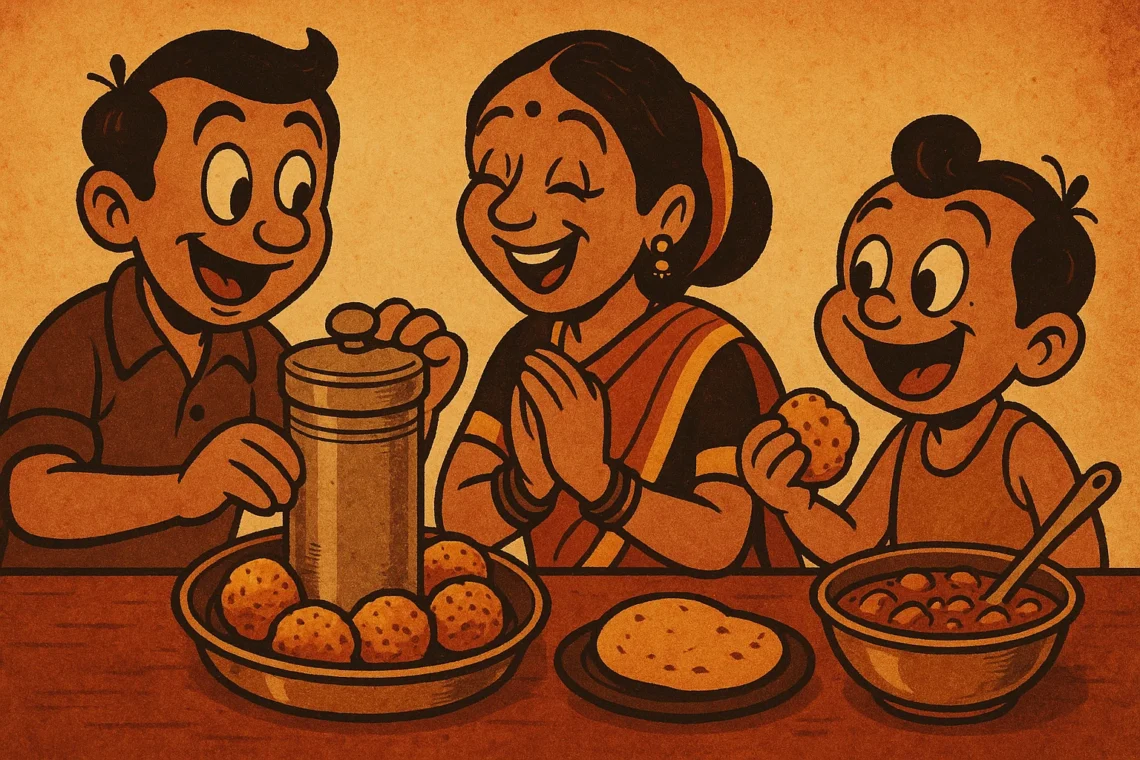There was a container in our kitchen that had clearly seen more of life than I had. Big, round, and slightly tarnished, it sat at the back of the bottom shelf — behind the lentils, next to the heavy pressure cooker that no one ever used anymore. Its lid was a little warped. Its surface bore burn marks, grease shadows, and a thin layer of age that no amount of dish soap could erase. But it remained. Immovable. Untouchable. Eternal. Everyone in the family knew: that container was older than me.
It was an aluminum canister, the kind you don’t see in shops anymore — not stylish, not stackable, definitely not dishwasher-safe. But it had presence. My grandmother said it was part of her wedding trousseau. My mother said it had held everything from wheat flour to sugar to pickle. My father once joked that even if the walls came down, that container would survive, still smelling faintly of roasted cumin and turmeric.
The Way We Treated It Said Everything
We didn’t use it often. It wasn’t the container you reached for daily. It held larger quantities of things — sometimes atta, sometimes jaggery, sometimes those crunchy karanjis during Diwali that only appeared once a year and disappeared within two days. But it was never empty. Even if it only had crumbs, even if we hadn’t opened it in weeks — no one dared to toss it or replace it. There was something sacred about it, though no one said so out loud.
As a child, I thought it looked like a treasure chest. I remember prying it open just to smell what was inside. There was always something earthy, slightly smoky, comforting. I once tried to clean it with steel wool to “make it new again.” My mom caught me mid-scrub. “Don’t,” she said gently. “It’s supposed to look like that.” That was the first time I understood that wear wasn’t damage. It was memory.
The Inheritance of Use
Unlike heirloom jewelry or framed photographs, the container didn’t ask for attention. But it had seen generations pass through the kitchen. It had sat on coal stoves, gas burners, polished granite, and now, fancy countertops. It had stored ingredients during rationing, during weddings, during floods. Once, during a gas strike in the ‘90s, my mom used it to store cooked rice and sambhar wrapped in banana leaves — a makeshift hot case that somehow kept things warm well into the evening.
When relatives came over, someone always remarked, “This dabba is still here?” To which my mother would respond, “Yes, and it still does its job better than anything new.” There was pride in that. Not just in the container, but in the continuity it represented — a way of saying, “We may change houses, routines, jobs, phones — but some things, we carry forward as they are.”
The Comfort of the Unchanging
Now, living in a different country, my kitchen is full of new containers. Transparent, airtight, labeled with printed stickers. But none of them carry that quiet weight. That sense of having endured. That feeling that this object has held not just ingredients, but seasons, crises, and joy. I miss that.
During one of my visits home, I opened the old container again. This time it held wheat flour, cool and soft to the touch. I scooped some into a smaller jar to take back with me, as if the flour might bring the smell and solidity of home along with it. My mother smiled. “You know,” she said, “you were a baby when I last cleaned this container properly. Now it just knows what to do.”
Steel May Shine, But This? This Lasts.
We often measure value by what’s new, shiny, optimized. But some things — like that container — teach us that true worth comes from time, not polish. From surviving every spill, every move, every pair of hands that touched it. From being useful, again and again, without needing to be perfect.
One day, that container will come to me. I’ll probably keep it on the top shelf, not for daily use, but for safekeeping. And maybe, someday, someone younger will ask, “Why do you still keep this old thing?” I’ll smile, hand it to them, and say, “Because it’s older than me. And it still works.”
Born in Mumbai, now stir-frying feelings in Texas. Writes about food, memory, and the messy magic in between — mostly to stay hungry, sometimes just to stay sane.












